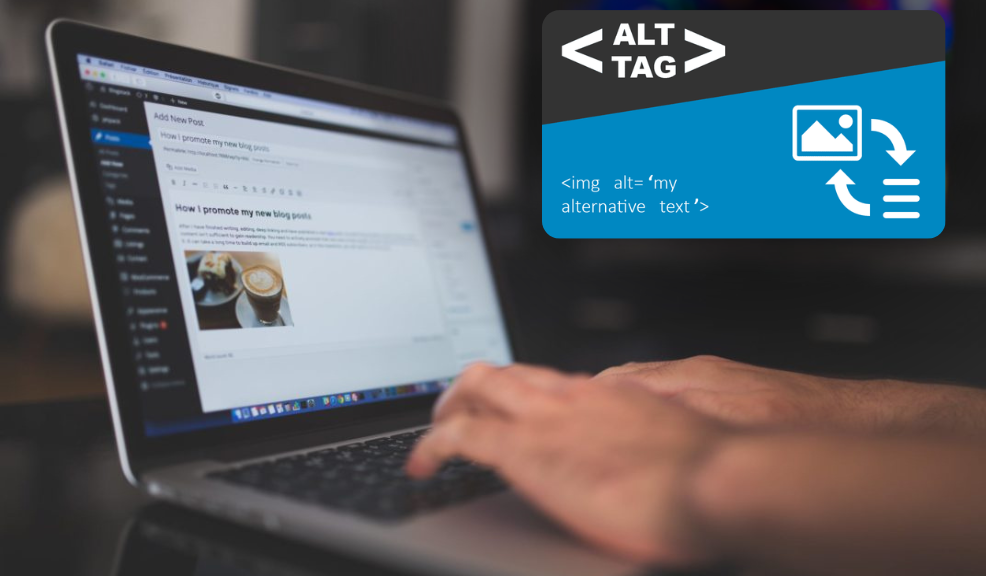Alt tags, also known as “alternative text” or “alt attributes,” play a crucial role in search engine optimization (SEO) and website accessibility. These tags provide a textual description of an image, provide context to what an image is displaying, informing search engine crawlers and allowing them to index an image correctly. However, not setting alt tags for your images can have a detrimental effect on the ranking of your web pages. Implementing proper alt tags can enhance a website’s ranking, improve user experience, and ensure compliance with web accessibility standards.
Here’s what a basic image tag with an alt attribute looks like in HTML:
<img src=”example-image.jpg” alt=”Description of the image”>
Why Are Alt Tags Important for SEO?
1. Enhancing Search Engine Visibility
Search engines like Google, Bing, and Yahoo rely on text-based content to understand web pages. Since search engines cannot “see” images, they use alt tags to interpret image content. Properly optimized alt tags improve image search rankings, drive organic traffic, and enhance the overall visibility of a website.
2. Boosting Website Accessibility
Alt tags ensure that visually impaired users, who rely on screen readers, can understand the content of images. Screen readers read out the alt text, providing a better user experience for people with disabilities. This makes websites more inclusive and aligns with the Web Content Accessibility Guidelines (WCAG).
3. Improving User Experience
If an image fails to load due to a slow connection or an error, the alt text will be displayed instead. This helps users understand what the missing image represents, reducing frustration and maintaining the context of the webpage.
4. Supporting Image Search Optimization
Google Images is a major source of web traffic. By using well-optimized alt tags, website owners can rank their images in Google Image Search results, potentially attracting more visitors to their site.
5. Enhancing E-Commerce and Other Industries
For online stores, alt tags are crucial in product images. A detailed alt text ensures that products appear in image searches, increasing visibility and potential sales. Similarly, industries like news, blogs, and educational websites benefit from optimized image alt text.
How to Write Effective Alt Tags for SEO
Creating effective alt tags requires striking a balance between being descriptive, concise, and relevant. Here are some best practices:
1. Be Descriptive but Concise
Your alt text should clearly describe the image but remain concise. Aim for around 125 characters or fewer, as some screen readers cut off alt text after this point.
Better Example: “Woman hiking mountain trail with backpack during sunset”
Poor Example: “image1”
2. Use Keywords Naturally
Incorporate relevant keywords into your alt text, but avoid keyword stuffing. The description should sound natural and informative.
Better Example: “Organic green tea leaves in a ceramic cup for weight loss.”
Poor Example: “Best herbal tea, organic tea, green tea, weight loss tea.”
3. Avoid Using “Image of” or “Picture of”
Search engines and screen readers already recognize that the alt text describes an image, so there’s no need to state it explicitly.
Example:
Better Example: “Chocolate cake with strawberries on top.”
Poor Example: “Image of a chocolate cake with strawberries on top.”
4. Ensure Relevance to Page Content
Alt tags should be relevant to the content of the page. If an image is purely decorative, it is better to leave the alt attribute empty (alt=””).
Common Alt Tag Mistakes to Avoid
1. Keyword Stuffing
Filling alt tags with keywords rather than accurately describing the image can harm user experience and potentially trigger search engine penalties.
2. Generic Descriptions
Vague descriptions like “image1” or “photo” provide no value to users or search engines.
3. Missing Alt Tags Entirely
Failing to include alt tags means missing opportunities for better SEO and accessibility.
4. Excessive Length
Alt text that’s too long may be cut off by screen readers, losing important information.
5. Irrelevant Descriptions
Alt text that doesn’t match the image or its context confuses both users and search engines.
How to Check and Optimize Alt Tags
Several tools can help you audit your website’s images to ensure proper alt tag implementation:
- Use SEO Tools: Tools like Google’s Lighthouse (built into Chrome DevTools),Screaming Frog SEO Spider, Semrush Site Audit, Ahrefs Site Audit can help analyze alt tags across your website.
- Manually Inspect HTML – Check the source code (<img src=”image.jpg” alt=”description”>) to verify if alt attributes are correctly implemented.
- Update Alt Tags Regularly – Keep your alt text up to date to align with content updates and SEO strategies.
Alt tags might seem like a small technical detail, but they represent an important intersection of SEO, accessibility, and user experience. By implementing descriptive, relevant alt tags across your website’s images, you improve your site’s search visibility, make your content accessible to all users, and enhance the overall user experience.
Taking the time to optimize your alt tags is a relatively small effort that can yield significant returns in terms of search rankings, traffic, and inclusive web design. Start auditing your website’s images today and make alt tag optimization part of your regular SEO maintenance routine.
